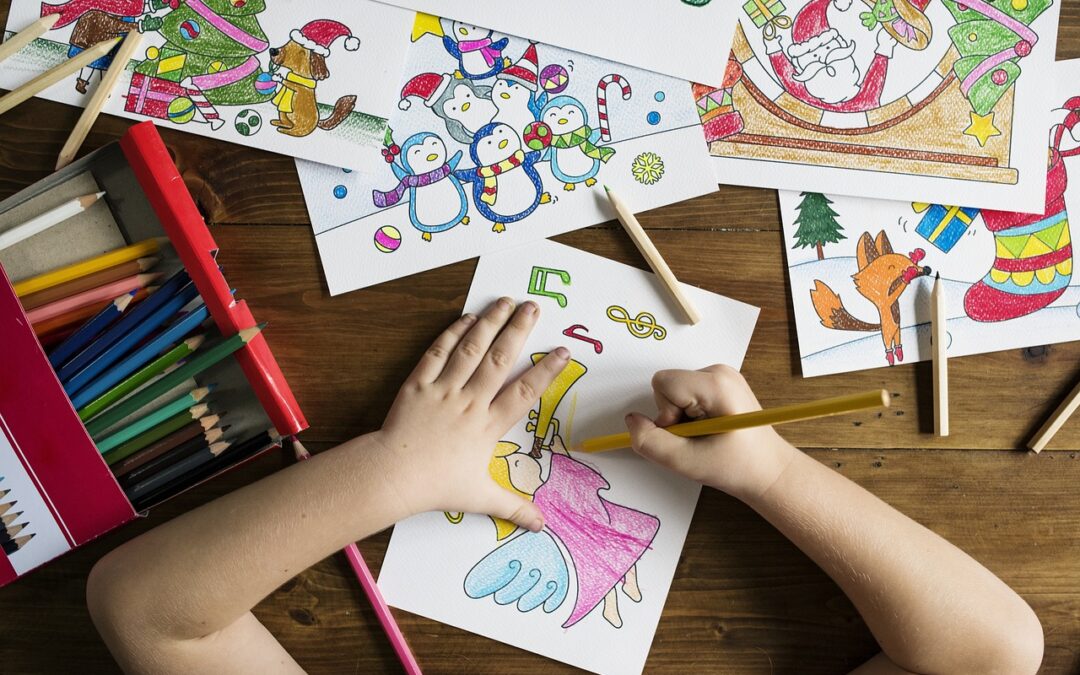
What Is Theme-Based Learning?
Theme-based learning uses a single topic or idea such as space, sports, mysteries, or world cultures as the foundation for lessons across multiple subjects. Instead of switching gears between unrelated topics, your child explores one central idea deeply, seeing how history, science, literature, and art all fit together.
This approach sparks curiosity, helps kids make connections between concepts, and keeps learning fun and engaging.
How to Pick a Theme That Interests Your Child(ren)
The best themes start with your child’s curiosity. Pay attention to what makes their eyes light up maybe they’ve been fascinated by the stars, constantly building with Legos, or asking questions about animals.
Here are a few ways to choose the right theme:
- Observe daily interests: What books, shows, or games does your child love most? A dinosaur enthusiast might love a “Prehistoric Life” theme.
- Follow their questions: If your child keeps asking why the moon changes shape or how people lived long ago, use that as your theme inspiration.
- Use the seasons or holidays: Fall could be “Harvest Time” or “Migration,” while winter might be “Inventions” or “Exploration.”
- Rotate by learning goals: If you want to strengthen reading skills, choose a story-based theme like “Mysteries” or “Folklore.” If it’s science-focused, try “Space Exploration” or “Oceans.”
A good rule of thumb: pick a theme that excites both you and your child that way you both are excited about the lessons and are willing particiapants! We all know it is hard sometimes to tackle the “i’m so bored” statements. This is a great way to tackle boredom and explore yours and their interests.
How to Map Different Subjects into the Theme
Once you’ve chosen your theme, it’s time to connect the dots across subjects. Here’s how to design your week around it:
Example Theme: Ancient Rome
- History: Explore daily life, government, and major events in the Roman Empire.
- Science: Study Roman engineering aqueducts, roads, and architecture. Try building a mini bridge or testing water flow.
- Literature: Read Roman myths, fables, or stories inspired by ancient civilizations.
- Math: Practice Roman numerals and basic geometry used in Roman buildings.
- Art: Create mosaics, laurel wreaths, or simple clay sculptures inspired by Roman art.
- Geography: Locate Rome on a map, trace its empire’s expansion, and compare ancient and modern borders.
This same approach works for any theme : Space, Sports, Mysteries, Animals Around the World, Medieval Times, or even Inventions. You’re helping your child see how all learning connects!
Benefits of Theme-Based Learning
Theme-based learning isn’t just fun — it’s effective. Here’s why it works so well:
1. Better Retention
When children learn through stories and connections, they remember information longer. It’s easier to recall facts about Roman numerals when they connect to Roman soldiers, stories, and architecture.
2. Higher Engagement
Kids are more motivated to learn when the topic excites them. A theme keeps lessons fresh and gives children ownership over their education.
3. Interdisciplinary Thinking
Theme-based learning naturally integrates subjects. Children see that science, art, and literature aren’t separate worlds they overlap and influence each other.
4. Flexible for All Ages
You can easily adapt a single theme for multiple grade levels younger kids might color or build projects, while older students research and write essays on the same topic.
5. Encourages Creativity and Critical Thinking
By connecting ideas across disciplines, students develop problem-solving and analytical skills that help them think “big picture.”
Theme-based learning transforms homeschooling into a journey of discovery. It keeps curiosity alive, strengthens understanding, and makes education feel like an adventure you and your child share together.
Start small pick one theme for the month and see how it goes. Whether you’re traveling through Ancient Rome, exploring Outer Space, or uncovering the Mysteries of the Deep Ocean, you’ll be amazed at how much more meaningful learning becomes when everything connects.





